June 28, 2024 7:07 pm
PART 2 – TODAY’S GIN STYLES
Australian Dry Gin
As mentioned, some Australian Craft Gins have London Dry Gin taste profiles. Those Gins mostly have the classic botanicals and they lead with strong juniper. The Australian Craft Gin distillers who are producing London Dry Gin taste profiles might call their gins “Classic Dry”, or just “Dry” and they might have a native botanical or two, but what do we call them? Honestly, I have no idea.
Is this helping?
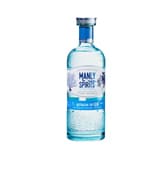
Australian Botanical Gin
OK, taking “Australian Dry Gin”, let’s tone down the “classic London Dry Gin style botanicals” and then add in some distinct and/or some subtle Australian native botanicals. Finger Lime and Lemon Myrtle for citrus tones, Cinnamon Myrtle, Anise Myrtle and Tasmanian Pepperberry for spices, Boobialla (Juniper-like), seaweed, ants, etc for interest.
Maybe the elements of the taste profile will still be close to a London Dry Gin style, except Australian Botanicals have been used to achieve the effect. Maybe the taste profile will be completely different.
How are you going? Getting all this?
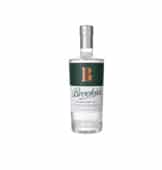
New Wave, Contemporary (Dry) Gin
Another “What if?”. Let’s take a dry style of gin, made by an Australian Craft Gin distiller add some SE Asia influences, Lemon Grass, Ginger, Kaffir Lime, Galangal, etc and make it according to the EU regulations for making London Dry Gin. What would you call it? It doesn’t exactly fit into the other styles.
There are plenty of such examples of “hard to define” Gin as well. Maybe this could be simply an “Other” style. Let’s just use the term/s New Wave / Contemporary Gin and leave it at that.

Navy Strength Gin
Ah, safe ground. A firm definition exists. The term is steeped in history (Mr Google will help), but all we need-to-know is that it is 57% (ABV) or above (EU regulations). The extra alcohol tends to pack a punch and can be described as a “bolder” expression of a London Dry gin, but remember, these can taste very different from each other.
Our Australian Craft Gins have taken out some impressive awards for their Navy Strength. There are other stronggins that don’t strictly meet Navy Strength, for example ABV of 50-55%, but they are still very bold. They are often based on the main “signature” gin of the distiller, just with botanicals “turned up” and, naturally, less added water.
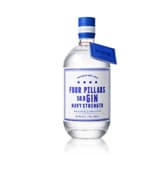
Barrel-Aged Gin
Gins are aromatic, refreshing, dry and lightcompared to whisky, bourbon and other dark spirits aged in wood, but why not try it with Gin?These Gins are more like a young whiskey, depending on the barrels used. Australian Craft Gins have some great examples. Mostly starting with the distiller’s normal Gin, they then spend weeks or months resting in oak barrels formerly used to age whisky, wine and sherry. The wood yields surprisingly complex results. The wood tones down the intensity of the juniper, and adds notes of vanilla, caramel and baking spices.
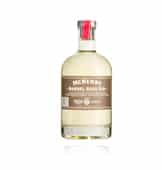
Old Tom Gin
Plenty of versions on the history of the name, however this sweeterGin evolved in the 18thcentury when Gin was pretty hard to stomach. A spoonful of sugar helped this medicine go down. For over a hundred years Old Tom was shelved, however with the current Gin boom and Craft Cocktails requiring Old Tom, it’s back with a vengeance.Sweet and with a lower alcohol content, try serving it to those otherwise dubious about gin, it might convert. Australian Craft Gins include a few Old Tom styles.
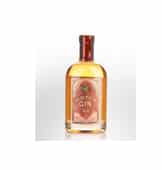
Infused or Flavoured Gin
A great example of this style is “Sloe Gin”. Sloe berries are soaked in the Gin after distilling, giving it a fruitiness and colour. With infused gins, the specific botanical/s are added after the gin is made and left for some time, rather than before or during distillation. By far the most popular in Australia is the Four Pillars Bloody Shiraz. Whether raspberries, flowers, shiraz grapes or truffles, just about everything is worth trying. Maybe you can do it at home as well.,
Australian Ink Gin is one notable example, infused with Thai Butterfly Pea flowers, imparting a distinctive blue/magenta hue.
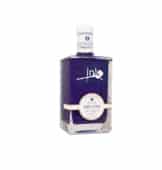
Genever or ‘Dutch Gin’
Genever – or Jenever- is an historic forerunner to Gin, but completely different from what most would expect of a Gin. It is malty, strong and outgoing. There are three types, and at least one Australian Craft Distiller makes a Jenever. Google the meaning of “Dutch Courage” for more.

Plymouth Gin
Here is the one that Australian Craft Gin distillers can’t make, because Plymouth gin, by regulations, can only be made in Plymouth, England. There used to be many distilleries, but now only one remains. Apart from knowing that it is a little less dry than London Dry, it really doesn’t have any relevance to Australia.

What Style do you Like?
There you have it. The last six are pretty clear. Part 1 explained that London Dry Gin isn’t a taste style, then there are the rest. I would like to think that we could develop definitions, or even sub-categories for Australian Botanical Gin, Australian London Dry, Australian Dry Gin and Contemporary Gin that might actually help consumers. Whatever the definition, today the best way to know what Gin you like is simply to try it.
Next time, let’s try and sort out the barrel of monkeys called Craft Distiller, micro-distiller, nano-distiller and just distiller.
